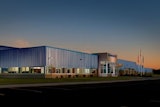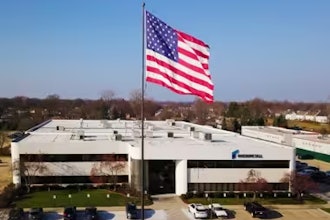
Warehouses are an integral part of nearly every industry. While the technology within their walls has changed and evolved over the years, many of the buildings and safety practices are starting to get outdated. Why is warehouse design so essential when thinking about warehouse worker safety?
A Culture of Safety
While warehouse design is vital, one can't-overlook element is creating a culture of safety within the warehouse. Continuous training is essential, both to ensure workers are aware of safety rules and protocols, and to reinforce those rules so employees are continually employing them.
Creating a culture of safety, where everyone is involved regardless of their position or rank, helps make the entire workplace safer for everyone involved.
Safety on the Floor
The operational floor of a warehouse can be more dangerous than most people think. Slip-and-fall accidents account for the majority of worker injuries and are the second-largest cause of accidental fatalities in a warehouse setting. That is why floor safety is so crucial. A few things to adopt, if you haven't already, might include:
- Designate "safe" or pedestrian-only areas and have designated routes for heavy equipment to prevent motor vehicle accidents in the workplace.
- Mandate that workers clean up trash and spills promptly and correctly to prevent trips or slips and falls.
- Ensure adequate lighting is available throughout the warehouse.
- Provide proper safety equipment as necessary for the job. These could include hard hats, eye protection, gloves, PPE or fall arrest equipment for workers who are working in elevated locations.
Floor safety is just one factor of warehouse safety. Let's take a closer look at some of the other safety concerns in a warehouse setting.
Safety Around Doors
Large warehouse doors are convenient for incoming and outgoing inventory, but failure to maintain them properly can also create a safety hazard. A broken door can prevent work by getting stuck closed, or create a security issue by getting stuck open. An improperly calibrated door might not stop if it starts to close on a person or other obstacle. A door with a broken torsion spring might fall, potentially injuring anyone standing beneath it.
Choosing the right torsion spring is crucial for preventing injuries and work downtime. Oil-tempered wire springs consist of tempered high-carbon steel, and very rarely need adjustment. They are the most durable style of spring.
Oil-coated wire springs are similar to the tempered springs, but instead of being heat-tempered, they get coated in oil. They also look much shinier — the oil tempering gives the previous springs a dark coloring, while oil-coated springs are usually bright silver.
Galvanized wire springs have a zinc coating to make them resistant to moisture. They also don't have any oil on them, which keeps the surrounding area cleaner by preventing the oil from spreading.
Older buildings, especially ones that have not been well-maintained during their lifetime, may need some upgrades to the door hardware to allow them to continue to operating safely during work hours.
Safety and Heavy Machinery
Nearly every warehouse in the country uses at least one forklift — and 11 percent of those forklifts will be involved in an accident. That equates to more than 61,000 accidents a year, more than half of which result in severe injury and roughly 85 fatalities every year.
One way to avoid these accidents is to ensure all employees who drive forklifts or use other heavy equipment have received adequate training. It is against federal law for anyone under age 18, or anyone who lacks proper training, to operate a forklift or other heavy equipment.
Comprehensive training should also include how to load a forklift properly. Nearly half of the forklift accidents that happen every year are due to the vehicle flipping over because the load was unbalanced. Evenly load pallets, and secure each load to prevent it from shifting or falling off during transit.
Warehouse safety is a shared responsibility, and it is up to everyone on the crew to ensure the warehouse is a safe working environment. Creating a culture of safety is just the first step. Take a closer look at your warehouse, especially if the building itself is more than 10 or 20 years old, and see where you can make improvements to create a less hazardous workplace for all.
Megan Ray Nichols is a STEM writer and blogger.






















